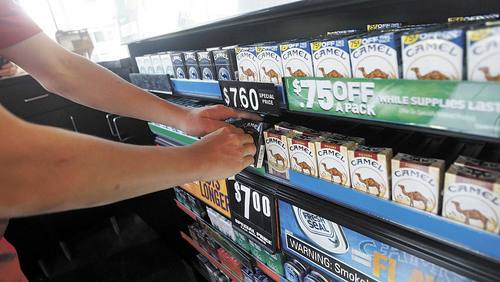Wahpeton Daily News: Study: More nicotine found in smokeless tobacco
Users of smokeless tobacco are exposed to equal or higher levels of nicotine and NNK, a cancer-causing chemical in tobacco products, than cigarette smokers, according to a study from the federal government.
Researchers from the Food and Drug Administration and the Centers for Disease Control and Prevention say more data is needed on the toxic components of smokeless tobacco products and the health of those who use them.
In the study, researchers analyzed information from more than 23,000 participants in national health surveys between 1999 and 2012. They looked for markers used to measure the addictive stimulant nicotine and cancer-causing NNK from blood and urine samples. They found the level of cotinine, the marker for nicotine exposure, to be .043 nanograms/milliliter in nonsmokers compared to 180 ng/ml among smokeless tobacco users, about 131 ng/ml in cigarette users and 184 ng/ml among people who used both smokeless tobacco and cigarettes.
Jason McCoy, tobacco prevention coordinator at PartnerSHIP 4 Health in Moorhead, Minnesota, said he’s eager to get this surprising information out to the public.
“We know that in rural parts of the state, one in 10 young white men, basically high school boys, are using Snus and chewing tobacco, thinking it’s less dangerous than smoking,” he said.
He said the only difference is when they use chewing tobacco, they aren’t affecting others with secondhand smoke.
“The individual is potentially damaging themselves more,” he said. “It’s surprising.”
And many young smokeless tobacco users are choosing flavored products, which make it more attractive.
“This ties into other research we have that shows flavored tobacco is viewed, in self reports by teens, as less addictive than regular tobacco,” McCoy said. “On the other end, we know the flavoring makes it more addictive. The part of the brain that ties into the flavor of the product, similar to why you may like Coke over Pepsi, it’s the same triggering mechanism that happens. The flavor gets assigned in your brain along with the nicotine.”
McCoy works with four counties — Becker, Clay, Otter Tail and Wilkin — and gets reports showing that often high school athletes know they don’t want to smoke because of the smell, so they choose smokeless tobacco, also thinking it won’t affect their athletic performance.
“We know that short term, it’s going to cause gum disease and tooth decay, long term, possible mouth, throat and stomach cancers,” he said. “It’s every bit as dangerous as cigarettes.”
He said he’s been told by teachers that students are taking the Ice Breakers mints and filling those containers with Snus, so they can surreptitiously carry the smokeless tobacco around with them.
“When they open it up, it just looks like they’re getting a mint,” he said.
About 3.6 percent of Minnesotans regularly use smokeless tobacco, according to the latest Minnesota Adult Tobacco survey.
For those wanting to quit their nicotine use, the state of Minnesota offers QUITPLAN which provides proven methods of quitting successfully. The program offers phone counseling and nicotine replacement tools at no cost. To find out more, visit www.quitplan.com or call 1-888-354-7526.
http://www.wahpetondailynews.com/news/study-more-nicotine-found-in-smokeless-tobacco/article_a81d5b36-9a9f-11e5-9849-3facbacf33f9.html
http://www.wahpetondailynews.com/news/study-more-nicotine-found-in-smokeless-tobacco/article_a81d5b36-9a9f-11e5-9849-3facbacf33f9.html


